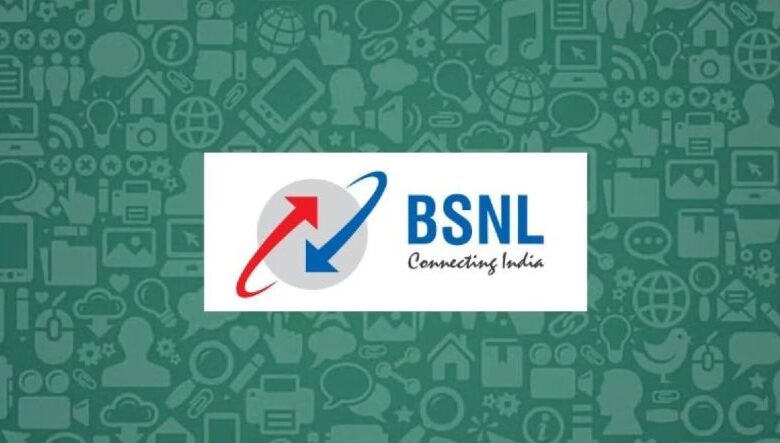

In an unexpected move that’s stirring the telecom industry, Bharat Sanchar Nigam Limited (BSNL) has launched an ambitious plan that could disrupt the power of telecom giants Jio, Airtel, and Vi. Following a surge in new customers over July and August, largely driven by price hikes from private telecom rivals, BSNL is preparing to shake up the status quo by rolling out its own 5G services. With a fresh focus on affordable, reliable connectivity, BSNL has invited tenders to kickstart its 5G network in Delhi, opening the door for partners to deliver cutting-edge technology across thousands of sites in India’s capital.
BSNL’s Comeback Strategy: Low-Cost Plans and Loyal Customers
BSNL’s recent customer gains paint a powerful picture of loyalty and trust in India’s telecom landscape. Amid rising tariffs from competitors, cost-conscious customers found refuge in BSNL’s budget-friendly plans, many of them making the switch despite BSNL’s current limitations in the 5G race. Now, the company is betting on this newfound momentum. It’s working to improve existing 4G services, expand its network reach, and enhance customer service — all as a prelude to the real game-changer: 5G.
BSNL’s plan to introduce 5G in Delhi brings more than just connectivity upgrades; it signals the state-owned company’s ambitions to redefine digital access for everyday Indians. In an age where fast internet is more necessity than luxury, BSNL’s strategy is clear: reach the underserved and unserved, and do so affordably.
The 5G Launch Plan: Local Partners and a Vision for Indigenous Connectivity
BSNL’s leap into 5G is rooted in a vision to build an entirely indigenous network, echoing the national sentiment of self-reliance in technology. In an exciting step forward, the company has invited bids for implementing a standalone 5G network in Delhi, targeting 1,876 specific locations. By choosing a standalone architecture, BSNL aims to deliver high-speed, low-latency 5G that meets modern connectivity demands, including innovations like fixed wireless access (FWA) broadband services.
The initial phase of the rollout is set to connect around 100,000 users, signaling BSNL’s intent to make a mark with quality coverage across key areas in the capital. And with this tender, BSNL has opened doors for Indian network providers and equipment manufacturers to showcase their technology on a national stage. The plan calls for partners who can handle the design, deployment, and maintenance of this network with top-tier standards, effectively shifting India’s reliance from foreign tech toward homegrown solutions.
Behind the Technology: Frequencies, Providers, and Revenue Sharing
BSNL’s 5G launch isn’t just about adding a few antennas or towers; it’s a carefully orchestrated effort involving advanced frequency planning and operational foresight. According to the tender, BSNL will leverage the 900 MHz and 3300 MHz bands to deliver robust 5G coverage in Delhi. These frequencies, known for both range and speed, promise a network capable of supporting the demands of a data-hungry population, from video streaming to virtual meetings and beyond.
To achieve this, BSNL intends to onboard two service providers, each playing distinct roles. The primary partner, known as the 5G as a Service (5GaaS) provider, will establish the 5G standalone core, backed by a Radio Access Network (RAN) setup with equipment from up to two original equipment manufacturers (OEMs). A secondary provider will also deploy RAN equipment, ensuring a diversified infrastructure base.
In terms of investment, the onus lies squarely on the service providers. All capital and operational expenditures — including core and RAN equipment, installation, and structural upgrades to BSNL towers — are the responsibility of the chosen partners. It’s a heavy lift, but BSNL offers an enticing incentive: a revenue-sharing agreement tied to earnings from both FWA broadband and mobile 5G services. This model underscores BSNL’s commitment to creating a win-win scenario, where both BSNL and its partners benefit from the service’s anticipated growth.
Rising from the Ashes: BSNL’s Roadmap for 4G and 5G Nationwide
BSNL’s current positioning in the market reveals a company that, while trailing its private-sector competitors in 4G and 5G, is intent on accelerating forward. Recent trials conducted in Delhi with local manufacturers demonstrate its dedication to launching indigenous 5G technology. Though the nationwide 4G rollout isn’t complete, BSNL is resolutely moving to finalize its 4G framework while simultaneously paving the way for a seamless 5G experience.
Telecom experts are watching closely as BSNL orchestrates this critical double play: closing the 4G gap while jumping into 5G ahead of schedule. It’s a bold move that could reframe BSNL’s image from a legacy brand to a modern telecom player capable of setting trends, rather than following them.
What This Means for Jio, Airtel, and Vi
BSNL’s entry into the 5G market doesn’t just introduce competition; it redefines the landscape altogether. Jio, Airtel, and Vi have dominated the telecom sector, building empires with vast resources and exclusive technologies. Yet, in their drive to maximize profits, recent price hikes have left an opening, and BSNL has quickly capitalized. By positioning itself as the affordable, accessible alternative, BSNL has attracted a wave of users and might just retain them long-term with the promise of 5G.
For private operators, BSNL’s resurgence comes as a wake-up call. The state-owned provider is no longer the quiet player in the shadows. Its decision to roll out 5G, especially in a high-stakes market like Delhi, challenges the telecom giants to reconsider their strategies, pricing, and service quality.
BSNL’s 5G: A Step Toward Inclusive Connectivity
BSNL’s 5G rollout holds the promise of leveling the playing field in a country where fast, affordable internet is becoming essential for economic participation, education, and social connectivity. By focusing on indigenous solutions and cost-effective deployment, BSNL isn’t just delivering connectivity — it’s paving a path for digital inclusivity. This emphasis on local sourcing and affordable pricing aligns BSNL with national goals, making it a valuable asset in India’s push toward technological self-reliance.
As BSNL moves forward with 5G deployment, the question is no longer whether the state-owned provider can compete but how dramatically it will transform the market. Will BSNL’s affordable 5G services capture a significant share of users, especially in cities? Will its indigenous technology bring a wave of new innovations to India’s digital economy? Only time will tell, but one thing is certain: the telecom landscape is about to experience a major shift.
Conclusion
BSNL’s decision to enter the 5G race is a game-changer for both the company and the telecom industry. It’s not only a bid to retain its customer base but a bold statement of intent to challenge Jio, Airtel, and Vi directly in their strongholds. With its focus on affordability, local technology, and revenue-sharing partnerships, BSNL is redefining what a public telecom service can achieve. The rollout may still be in its early stages, but its potential impact is already reverberating through the sector. For consumers, BSNL’s 5G promises an affordable and accessible option, while for competitors, it’s a call to action.
FAQs
- What is BSNL’s 5G rollout plan? BSNL plans to launch 5G services using indigenous technology, starting with 1,876 sites in Delhi. This will be a standalone 5G network featuring fixed wireless access (FWA) broadband.
- Why did BSNL gain so many customers recently? Many customers switched to BSNL due to recent price hikes by private competitors, drawn to BSNL’s more budget-friendly plans.
- What technology will BSNL use for its 5G network? BSNL will operate on the 900 MHz and 3300 MHz frequency bands, with equipment from two service providers managing different parts of the 5G network.
- How will BSNL fund the 5G infrastructure? BSNL’s 5G partners will cover all infrastructure costs, including equipment and tower upgrades. BSNL will offer revenue sharing based on earnings from FWA and 5G mobile services.
- How will BSNL’s 5G affect Jio, Airtel, and Vi? BSNL’s 5G entry introduces new competition, particularly appealing to customers looking for more affordable options. It challenges the dominance of private telecom players, potentially impacting their market share.




